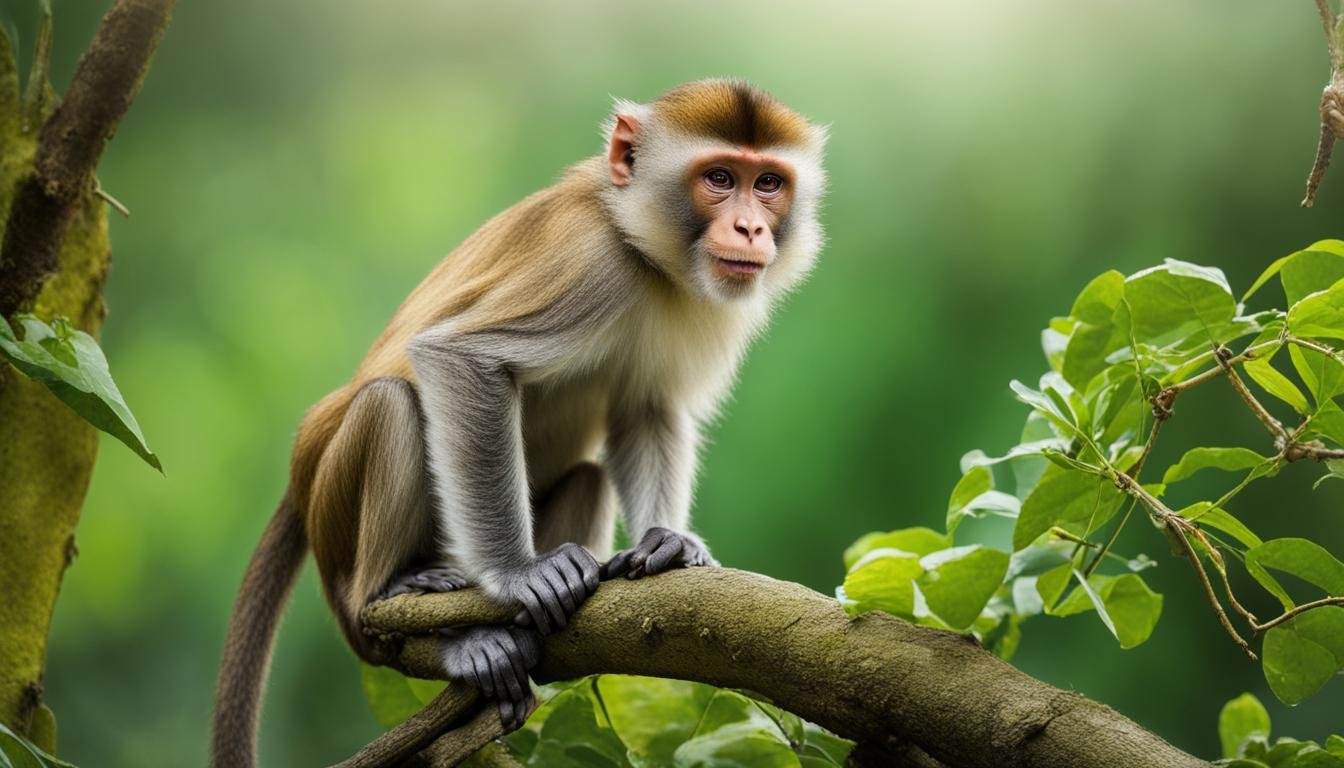Monkey
Monkeys are a diverse group of mammals belonging to the order Primates. They are known for their intelligence, agility, and social behavior. The evolution of monkeys can be traced back to approximately 40-50 million years ago.
They are believed to have evolved from small, tree-dwelling mammals and have since diversified into various species found across the world. Monkeys can be classified into two main groups: New World monkeys and Old World monkeys. New World monkeys are found in Central and South America, while Old World monkeys are native to Africa and Asia. Their evolutionary history has greatly influenced their physical characteristics, behavior, and habitat preferences.
Size
Monkeys vary significantly in size, ranging from the largest species, such as the male Mandrill, which can weigh up to 82 pounds and have a length of 3 feet, to the smallest species, like the pygmy marmoset, which measures only about 5 inches and weighs around 4 ounces. Size differences can also be observed within different monkey species, with males often being larger than females. The size of monkeys is influenced by factors such as diet, habitat, and evolutionary adaptations. Larger monkey species tend to have a more robust build, while smaller species have adapted to navigate through narrow branches and find food in tight spaces. These size variations demonstrate the incredible diversity within the monkey family and the unique adaptations each species has undergone.
Habitat
Monkeys inhabit a wide range of habitats, including tropical rainforests, subtropical forests, grasslands, and mountains. The specific habitat preferences of each monkey species vary, with some species primarily found in dense rainforests, while others thrive in more open savannah or woodland areas. The availability of food sources, water, and suitable shelter greatly influence their distribution. Monkeys are known for their arboreal nature, spending much of their time in trees, where they find both safety and an abundant food supply.
Behavior
Monkeys display a wide range of behaviors that are both fascinating and complex. They are highly social animals, living in groups known as troops or bands. Within these groups, a hierarchical social structure is established, with dominant individuals having priority access to resources and mating opportunities. Monkeys engage in various forms of communication, including vocalizations, facial expressions, and body postures. Grooming behavior is also crucial in maintaining social bonds within the group, helping to reduce tension and reinforce social relationships. Some monkey species, such as the Japanese macaque, have even been observed using tools, highlighting their intelligence and adaptability.
Hunting
Monkeys face several natural predators in their habitats. These include big cats such as leopards, jaguars, and lions, along with birds of prey and snakes. To defend themselves against these predators, monkeys have developed a range of defense mechanisms.
One defense mechanism is their exceptional climbing and jumping abilities, which allow them to escape quickly into the safety of trees. Monkeys are highly optimized for arboreal living, with adaptations such as long limbs and strong grasping tails that enable them to navigate through the treetops with ease.
In addition to their climbing skills, monkeys rely on their agility and strength to fend off attackers. They can use their sharp teeth and strong jaws, as well as their powerful limbs, to defend themselves when confronted by a predator.
Communication is also essential in protecting the group from potential dangers. Monkeys use vocal alarms and warning calls to alert others to the presence of predators. These vocalizations can help mobilize the group and increase their chances of survival.
Despite these defense mechanisms, monkeys still face significant threats from human activities. Habitat destruction, hunting, and the illegal wildlife trade pose severe risks to monkey populations worldwide. Ongoing conservation efforts aim to mitigate these threats and protect the delicate balance of ecosystems in which monkeys play a vital role.
Mortality
The average lifespan of monkeys varies among species, but most live for about 10-40 years in the wild, depending on their size, habitat, and other factors. However, infant mortality rates can be relatively high due to predation, diseases, and other factors.
Monkeys are susceptible to various diseases, including viral infections like Ebola and Herpes B, which can have devastating impacts on populations. Additionally, human activities such as deforestation and hunting pose significant threats to monkey populations, leading to habitat loss and population decline.
Conservation efforts focus on protecting their habitats, combating illegal wildlife trade, and promoting sustainable practices.
Location
Monkeys are a diverse group of mammals that inhabit various parts of the world. Different species of monkeys are native to different continents and regions, resulting in a wide distribution across the globe.
New World monkeys, including popular species like squirrel monkeys and howler monkeys, primarily reside in Central and South America. These regions provide the ideal habitat for these monkeys to thrive, with their lush tropical rainforests and diverse ecosystems.
On the other hand, Old World monkeys, such as macaques and baboons, can be found in Africa and Asia. The vast continent of Africa is home to a wide variety of monkey species, including the vibrant red colobus monkeys found in rainforests. Asia, known for its diverse landscapes, provides habitat to monkeys like langurs, which are found in both forests and savannahs.
The distribution of monkey species is influenced by several factors, including climatic conditions, food availability, and historical evolutionary patterns. These factors shape each species’ habitat preferences and contribute to their unique geographic range.







